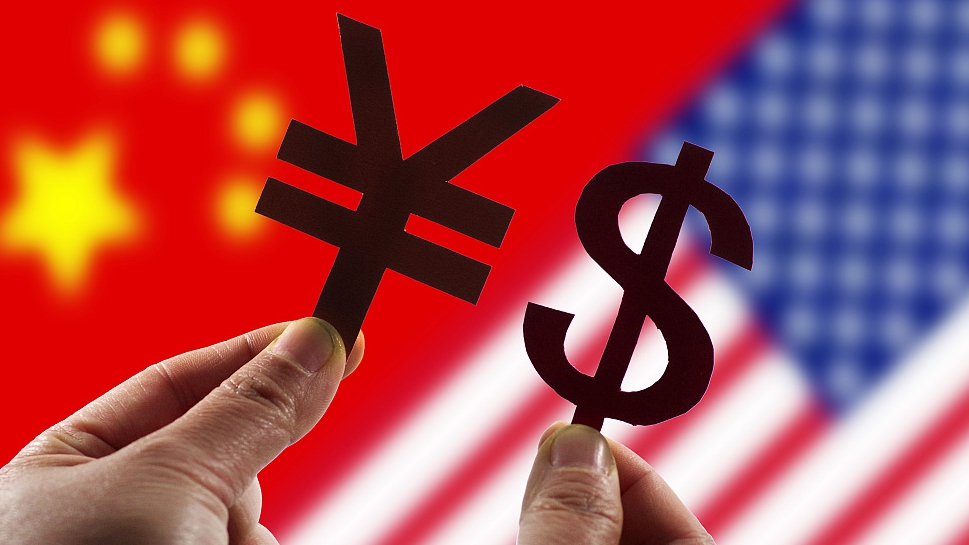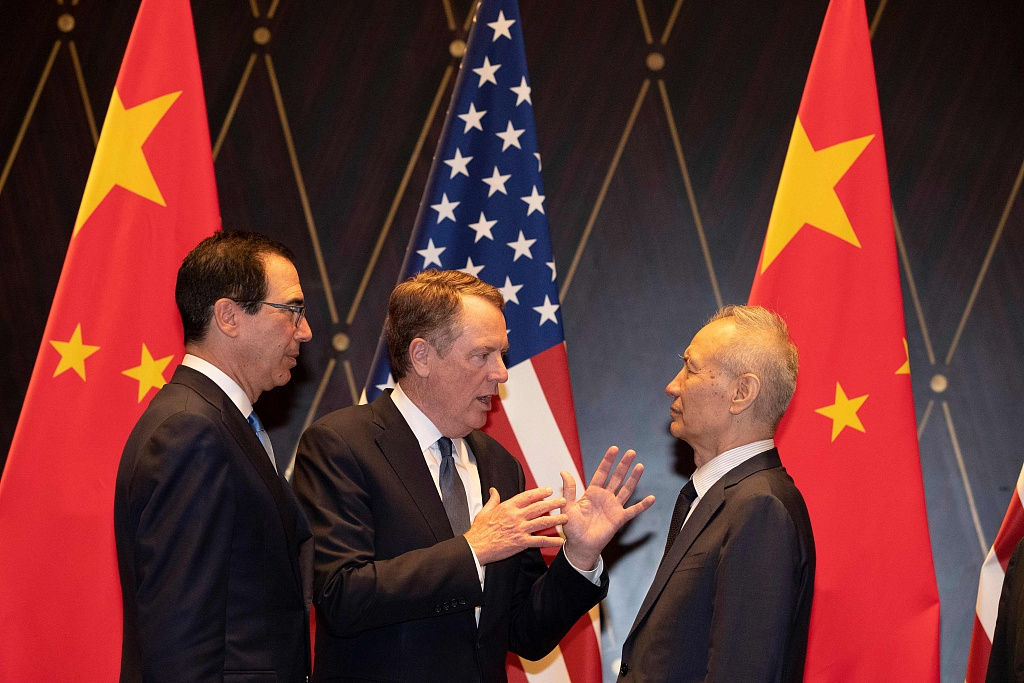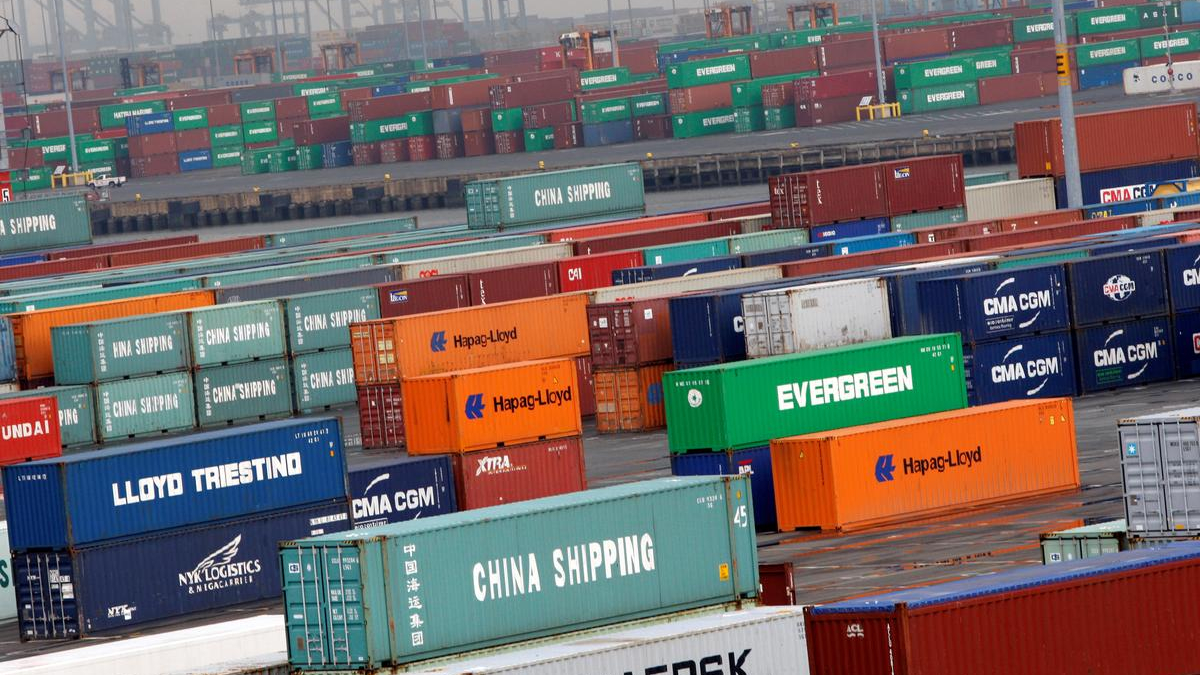

Editor's Note: Tom Fowdy is a British political and international relations analyst and a graduate of Durham and Oxford universities. He writes on topics pertaining to China, the DPRK, Britain, and the United States. The article reflects the author's opinions, and not necessarily the views of CGTN.
Hours after an announcement from China that declared it would be suspending tariffs on some American imports on Wednesday, U.S. President Donald Trump took to Twitter and proclaimed: "At the request of Liu He" and in view of the "70th anniversary" of the People's Republic of China, the U.S. has agreed "as a gesture of goodwill to move a scheduled increase in tariffs on the 250 billion U.S. dollars' worth of goods from (25 percent to 30 percent) from October 1 to October 15."
The two-week window of reprieve is not coincidental.

During that time, the Trump administration will meet with Chinese officials and aim to reboot trade talks, which have been constantly disrupted due to the President's abrupt decisions to repeatedly escalate tariffs.
The President is also offering a diplomatic acknowledgement of the country's anniversary.
Nevertheless, in doing so they have played down expectations of an immediate breakthrough, stressing that the stakes between both sides are very high.
Nevertheless, optimist observers of the trade war will point to the reprieve and note the Trump administration may still be serious about securing some kind of breakthrough.
Although the relief is really only symbolic in practice, it can be interpreted as an opportunity for both sides to offer some concessions. If this is to be pulled off however, there are some things which need to be done.

United States Trade Representative Robert Lighthizer (C) chats with Chinese Vice Premier Liu He (R) as U.S. Treasury Secretary Steve Mnuchin looks on in Shanghai, China, July 31, 2019. /VCG Photo
Firstly, the United States has to give up its "all-or-nothing," zero-sum game approach to negotiations and win back China's confidence that it is serious about a deal. Secondly, Beijing needs to put some more things on the table which can be given to Trump if reciprocal guarantees are given. Then, most importantly, the White House must stop looking at the end of trade as a singular "grand bargain" and instead an evolutionary, step-by-step process whereby both sides deescalate over a prolonged period of time by swapping concessions, than simply demanding a one-sided grocery list of changes from China which are structurally unrealistic.
There has been much debate as to what Trump truly wants from the trade war. There still is and in the bigger picture, this "good will" window in October doesn't change a lot. Pessimists will note that the window is symbolic, tariff increases are not being took off the table at all they're being shifted along the line to two weeks later.
Yet, in that timespan a few can deny an opportunity to talk has been created, giving momentum to the restart of trade negotiations in October. Of course, we have had "windows" like this before, with considerably better momentum too. One just has to look at the events in Osaka back in June, wherein the circumstances were far more favorable.
The President however, has often unilaterally killed these windows by publicly accusing China of cheating and then abruptly declaring more tariffs, regardless of the facts. This has often come in spite of optimism from certain officials in his administration.
In this light, the biggest obstacle to the trade war is his own insistence that this must end in a "zero-sum" "all-or-nothing" game: that being Beijing either gives America everything it wants, immediately, or it gets no deal. This has made compromise, of which is ultimately necessary to resolve a deal of such a magnitude, impossible.

Shipping containers are seen at the Port Newark Container Terminal in Newark, New Jersey, U.S. /Reuters Photo
China cannot be expected to unilaterally surrender its national economic interests. Officials have wondered if Trump is truly serious about a deal.
Still, Beijing must recognize at this point if this new window is to get anywhere, something must be given to keep the Trump administration on board with talks, even if it can be reversed later if more bad faith is shown.
In this case, to suit Trump's own ego and narrative, China should approach these talks and place several things on the table in the view to gaining more reciprocity from Washington. For example, new purchases of American agricultural products, or pledges to offer U.S. companies more market access.
In this case, an earnest resolution to the trade war, if Washington is truly serious, should involve a stable and deescalated step-by-step process whereby both sides trade off concessions and thus remove the temperament of the conflict, aiming for a long-term solution than a simple "quick fix" deal which is unrealistic.
Of course with Trump as the President this is much easier said than done, who insists on "winning" and has opted for escalation above patience every single time.
However, if China can continue to approach dialogue openly and fairly, reminding the U.S. that it will negotiate if fairness and incentives are provided, but in turn will not capitulate or subdue to escalation, then this window of reprieve may prove to be more productive than what the people expect.
The president's move is highly symbolic, but it does not come without opportunity. Let's see what can be done.
(If you want to contribute and have specific expertise, please contact us at opinions@cgtn.com.)

Copyright © 2018 CGTN. Beijing ICP prepared NO.16065310-3
Copyright © 2018 CGTN. Beijing ICP prepared NO.16065310-3